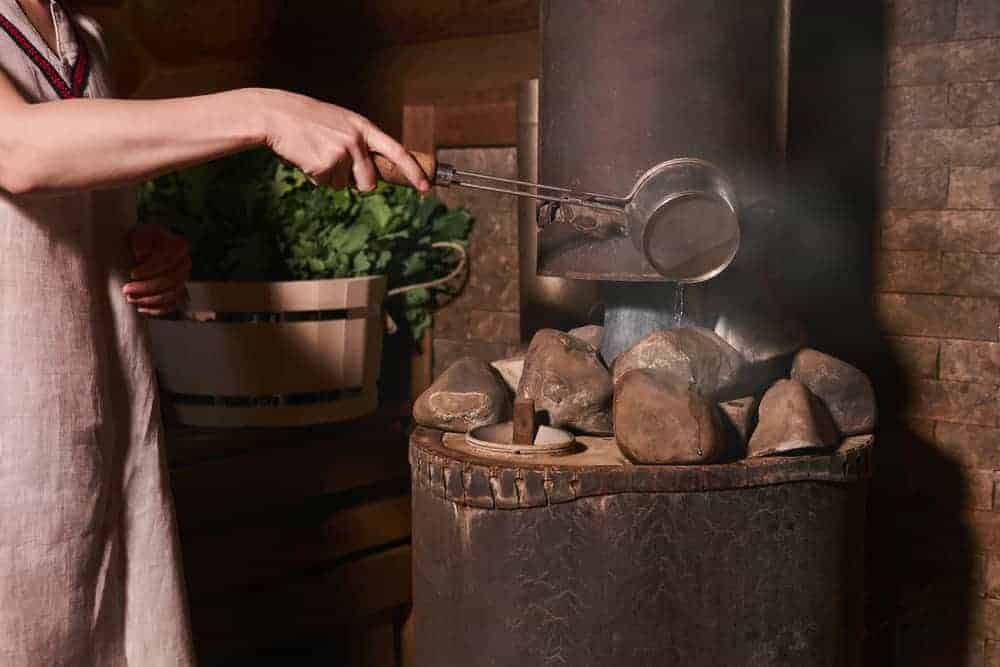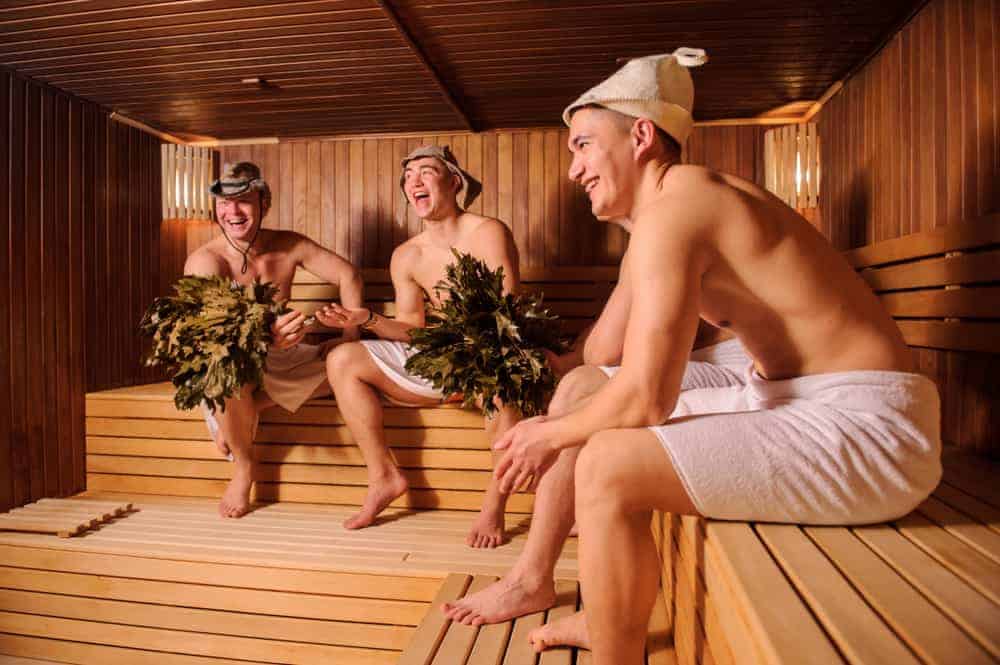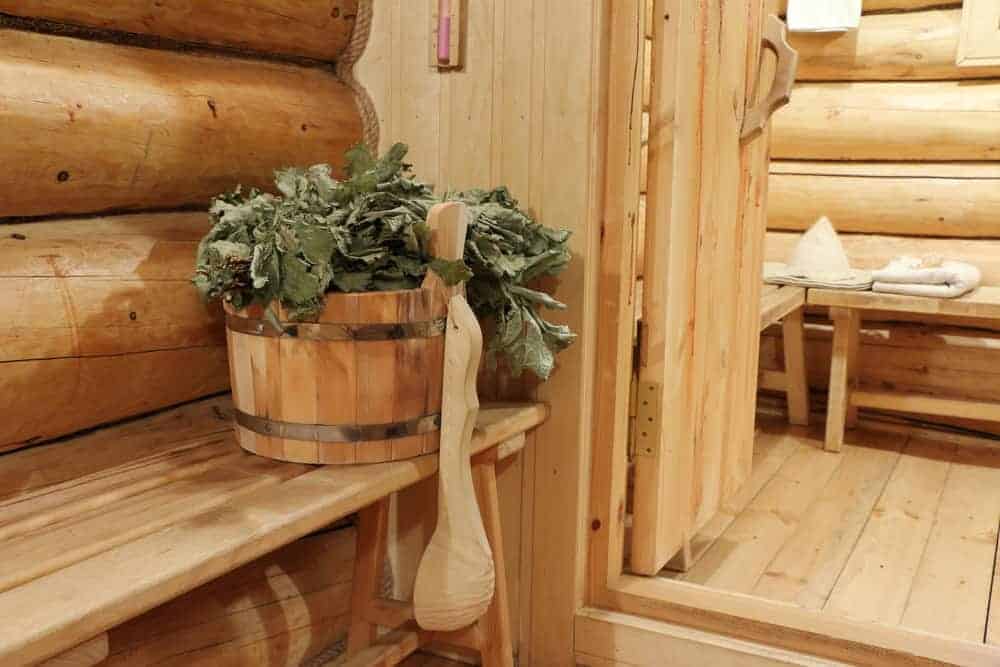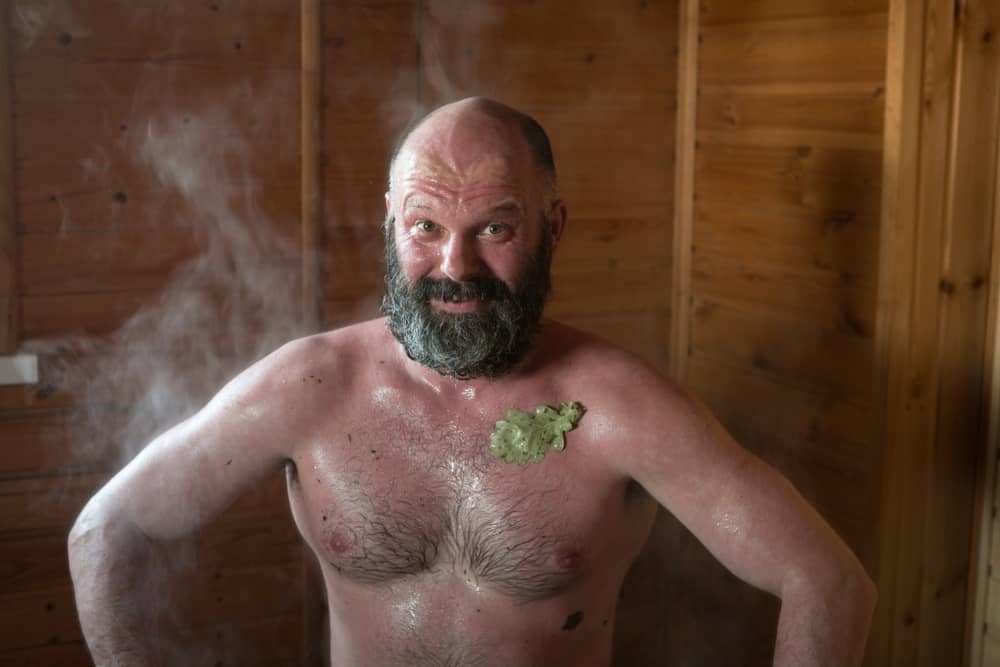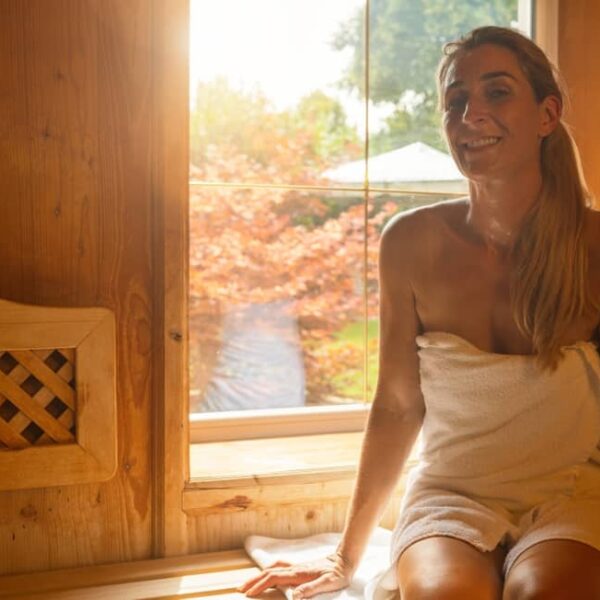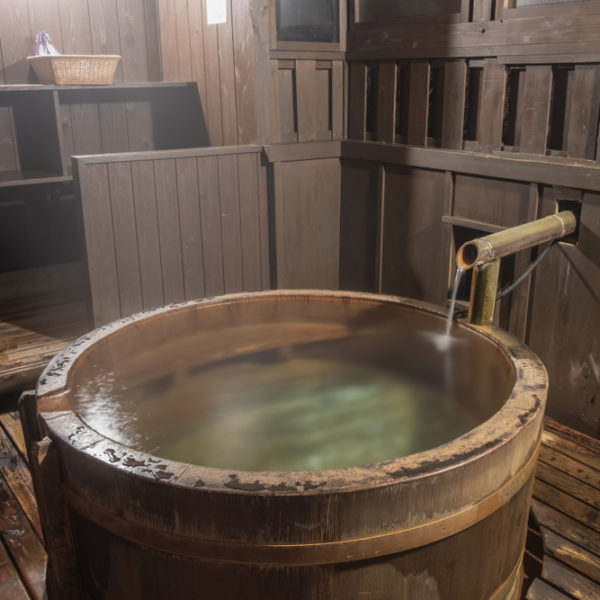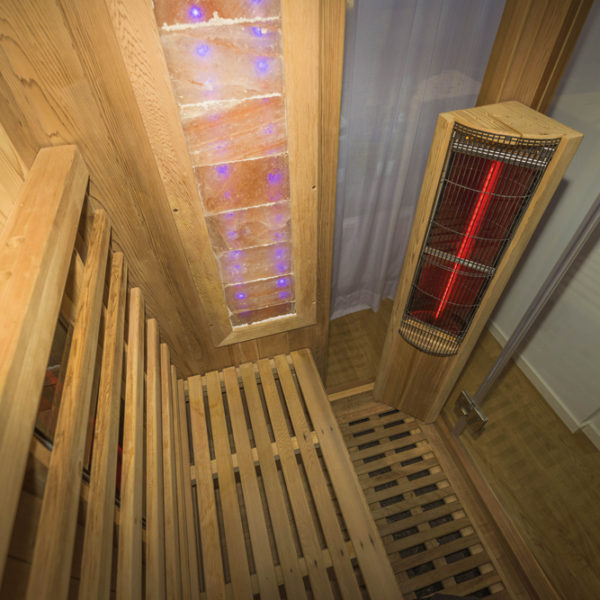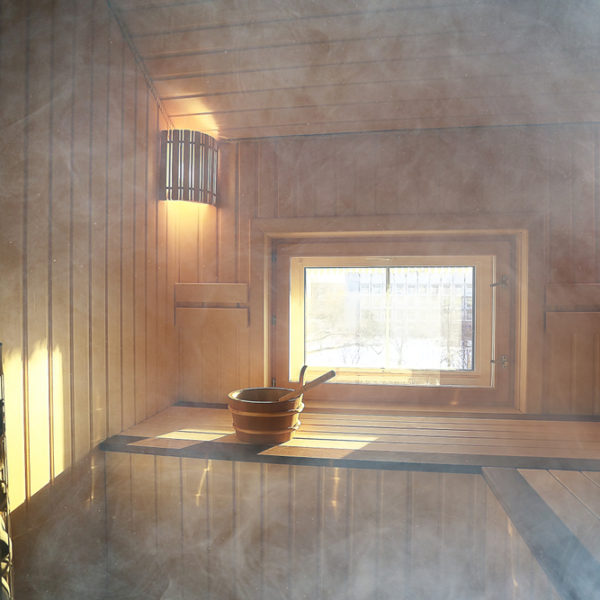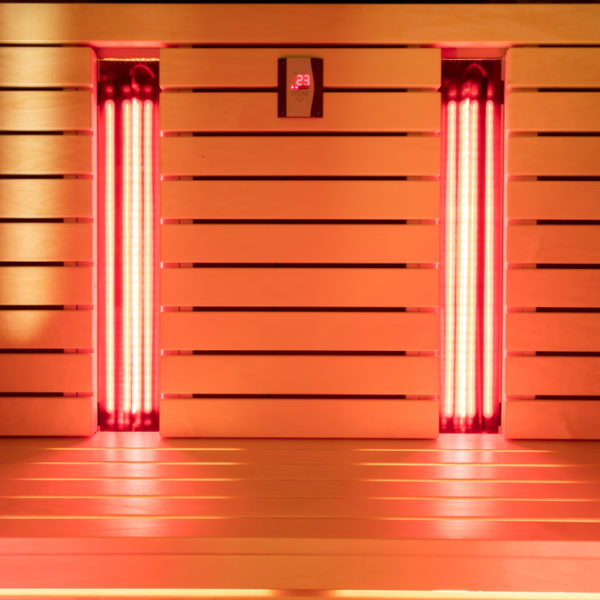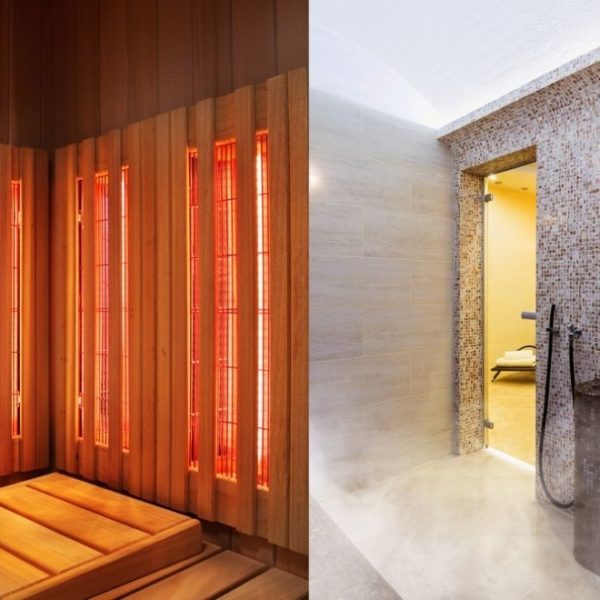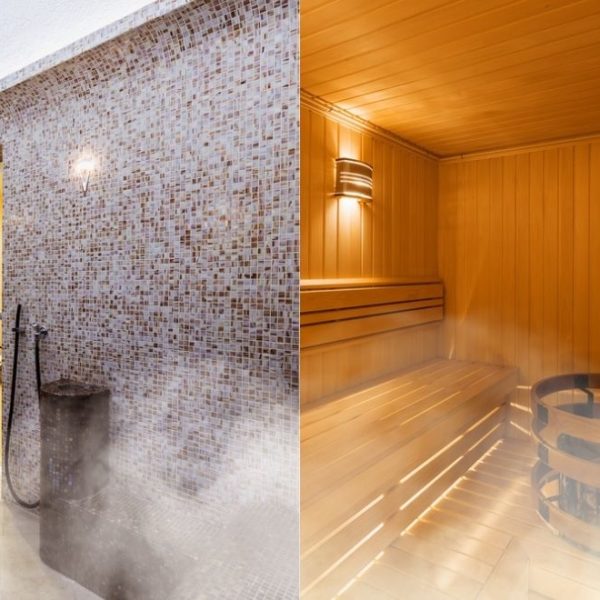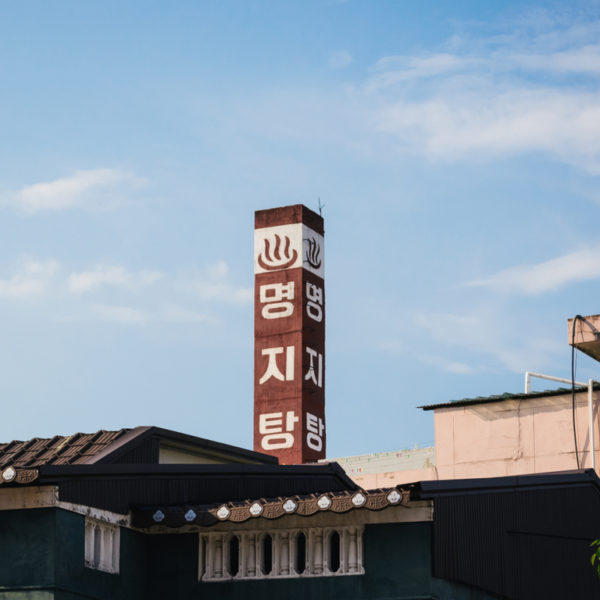If you love your sauna blanket, you might be thinking about trying a full-on sauna experience.
Russian saunas are becoming increasingly popular as a way to relax and unwind. But what is a Russian sauna? What makes it different from other kinds? And what do you need to know before you use one?
We’re here to answer all these questions and more! So sit back and relax, as we take a tour of 18 facts about a Russian sauna. And when we’ve finished, the only thing left for you to do will be to try one for yourself!
Russian Sauna Facts
1. It’s known as a banya
If you hear someone talking about a “banya”, don’t be confused! It’s just another word for a Russian sauna or steam house.
It’s thought to come from the Greek for using steam to cleanse the body. An alternative root is the Latin word balneum. That means something that takes away sadness and pain, and it’s the same root from which we get the word “balm”.
Either way, when you hear a Russian talking about a banya, you’ll know what they mean!
2. It has a long history
One of the earliest written descriptions of a Russian sauna appears in 1113. The document is the Primary Chronicle, and it relates a supposed journey of the apostle Andrew across Russia.
According to the Chronicle, Andrew was astonished to witness the bathing rituals in that country. He talked about wooden bathhouses which were “warmed to extreme temperatures”.
Bathers would undress, cover themselves in tallow, then lash themselves with bundles of reeds. They would then take a dip in freezing cold water.
The whole thing seemed remarkable to the apostle, who reportedly referred to it as “a veritable torment”!
3. They were originally warmed by open fires
Just like a sauna blanket, heat is the single most important element of the banya experience.
The first Russian bathhouses were long wooden structures with a stone stove in the corner. Once the fire had been built, the stones were moved to a wooden tub using iron rods. The smoke was then flushed out of the structure before the bathers entered.
All this fire and smoke made the bathhouses very sooty places. It was for that reason that they got the name of “black bathhouses”.
4. It’s an important place to socialize
Banyas continue to play a very important part in Russian social life. They serve as meeting places for politicians and business people. And they’re used by people in all walks of life.
In rural parts of Russia, traditionally almost every household had its own banya. In towns, however, the lack of space made this impractical. As a result, public banyas became very important to city dwellers.
5. They have a number of different rooms
Banyas can vary significantly in design. Some are a simple cabin, similar to a Finnish sauna. But more usually, there are three different chambers: the entrance, a room to wash in, and the steam room itself.
The entrance room is known as a predbannik, which means “pre-bath”. This is where you disrobe, and it contains pegs for your clothes and benches to sit on. It’s also where fuel is added to the fire box for the stove in the steam room.
The washing room has a tap with hot water that’s been heated by the stove. There’ll be either a second tap or a jug for the cold water. Bathers will mix the cold water in with the hot to create a comfortable temperature to wash in.
Once you’ve washed, you’re ready for the steam room. This houses the stove, a bucket with water, and benches, the latter usually running down the middle of the room.
6. Banyas come in black and white
There are two main types of banyas, black and white.
Black banyas are the most basic. Here, the smoke from the stove escapes through a hole in the ceiling. In white banyas, on the other hand, it’s funnelled out through pipes, keeping the interior cleaner.
All the other aspects of the two styles of banya are the same, including the favored fuel of birch wood.
7. Saunas are even used when hiking
The Russians are so fond of their saunas that they’ll even take one in the middle of a hike. There’s a special name for these hiking saunas – pokhodnaya banya.
They’re usually pretty rudimentary structures, in many cases simply taking the form of a tent. They’re often located near a river or lake, where there are likely to be large boulders to make the stove. And that also allows sauna users to take a dip in the cold water after they’ve finished.
The stoves in these hiking saunas are very big – between 3 and 12 feet across, and about 5 feet high. The fire is built inside, and the rising heat from the flames makes the stones at the top baking hot. When water is poured on the hot surface, it immediately evaporates as steam.
8. Hats are all the rage …
Many Russians wear hats in the sauna to help them cope with the heat. The temperatures in Russian saunas are very high – around 200 degrees Fahrenheit. Wearing a hat helps users stay comfortable for longer.
Traditional sauna hats have long sides that help keep the tips of wearers’ ears cool too. They’re usually made of wool or woolen felt, which is good at insulating heat. Sometimes sauna users will soak their hats in cool water before wearing them, increasing the cooling effect.
9. … As are mittens
If you’re looking to buy a sauna hat, you may find one being sold together with one or two mittens. The latter will be made of the same material and look rather like an oven glove. So what do you use them for?
Well, do you remember the Chronicle, with its report of sauna users lashing themselves with reeds? Those reeds are actually a key part of the banya tradition!
A banya broom, or banny venik, is a bundle of branches, usually birch, eucalyptus or oak. Sauna users soak it in hot water before hitting it against their bodies. It’s designed to help their skin heat up quickly, opening their pores and aiding circulation.
And if you’re going to be holding onto something in a sauna, you don’t want it to burn your hands. You can avoid any risk of that by wearing a sauna mitten.
10. Banyas are often fragrant places
Russians often use herbal extracts to create a sweet aroma in the banya.
These can be used alongside the heat to create a feeling of calm. And different fragrances have different properties. Lavender and bergamot are great for relieving stress, for example, while peppermint gives energy and rose reduces anxiety.
Perfumed oils are usually added to the water poured on the coals, infusing the steam with the fragrance.
11. You can tell your future in a banya
Or rather, the spirit of the banya can tell you your future! Russian mythology holds that the banya is inhabited by a mischievous sprite known as the Bannick.
This unprepossessing creature is said to be thin, with long white hair, a long beard and long nails. He lives behind the stove, and his pastimes include spying on naked women and throwing hot water at people who annoy him.
But he also has the power to predict the future. If you want the Bannick’s take on what it holds for you, you’re supposed to stand with your back to the door of the steam room. The door has to be ajar for it to work, mind you.
If your future holds good things, the Bannick will gently stroke your back. If the news isn’t so good, he’ll claw at it instead!
12. Russians call their saunas Finnish!
There’s a good deal of similarity between the Russian and Finnish sauna traditions. So much so, in fact, that Russians sometimes refer to their saunas as “Finnish banyas”!
Both types of sauna involve water poured on hot coals. Both see users hitting themselves with broom-like bundles of twigs. And in both cases, a hat is a traditional part of sauna garb.
One of the main differences between the two styles, though, is the use of fragrance. In a Russian sauna, essential oils are often added to fill the banya with sweet aromas. In a Finnish sauna, the focus stays firmly on the heat.
13. Sweat, chill, repeat
The Russian sauna ritual alternates time in the steam room with periods of cold. The idea is that the warmth opens the pores of the skin, and the cold then cleanses them. The different temperatures are also supposed to be good for the body overall.
After sweating it out in the banya, the next step is to cool down. This could involve a dip in a lake or pool. In winter, it might even involve a roll in fresh snow!
After that, it’s back into the steam room again. It’s usually on the second or third trip to the steam room that the venik is used for the first time.
14. Eating and drinking can be part of the process
The chilling out break is also a great opportunity for sauna users to relax and chat. That can even include eating and drinking. Traditional drinks include beer, as well as hot options like tea. (We know which we’d choose if we’d just been for a roll in the snow!)
Some commercial banyas include bars or even restaurants serving light meals. It’s all part of the socializing experience.
15. Expect to go in naked
In Russia, it’s normal to use the sauna in the nude. Men and women usually have their own set times to use the banya. And although it may seem odd to people from other cultures, you’re likely to draw more attention wearing a swimming costume than without one.
Don’t be surprised if someone offers to beat you with a venik! It’s all part of the experience. It’s polite to offer to return the favor.
16. You may need to give other sauna users space
From time to time, sauna users may take action to increase the humidity in the banya. And that can mean you need to give them a bit of space!
The first thing to look out for is someone adding water to the hot stones. They’ll then pick up a towel or a venik. This is the point at which you want to move away!
The likely next step is for them to twirl the towel or venik around their head. Think of the spinning blades of a helicopter, and you’ll get the idea.
The aim of this strange behavior is to raise the temperature and humidity levels in the steam room. That’s designed to create the conditions for maximum sauna benefits.
17. The banya in Russian idioms
The banya is such an important part of Russian culture that several sayings allude to it. Russians refer to the banya as a “second mother” for its nurturing properties. And washing in the banya is said to be like being “born again”.
Other sayings also refer to the value of the banya to health and wellbeing. The banya is said to make you healthy and to stimulate conversation. And a venik in a banya is said to be “worth more than money”.
18. The most famous banyas are in Moscow and St Petersburg
The banya tradition remains alive and well in Russia. And if you’re lucky enough to visit, some of the best and most famous banyas can be found in the cities of Moscow and St Petersburg.
Of these, the jewel in the crown is the Sanduny Baths in Moscow. These first opened their doors back in 1808. Today, the richly decorated rooms serve as a place for politicians, celebrities and entrepreneurs to meet and do business.
Ready to try a Russian sauna?
That brings us to the end of our look at 18 facts about a Russian sauna! We hope you’ve enjoyed learning more about the traditions and etiquette of the banya.
Now you know all about the sauna ritual, you’ll be ready to try it for yourself! So grab your hat and venik, lie back and relax. Just don’t forget to watch out for that pesky Bannick!
